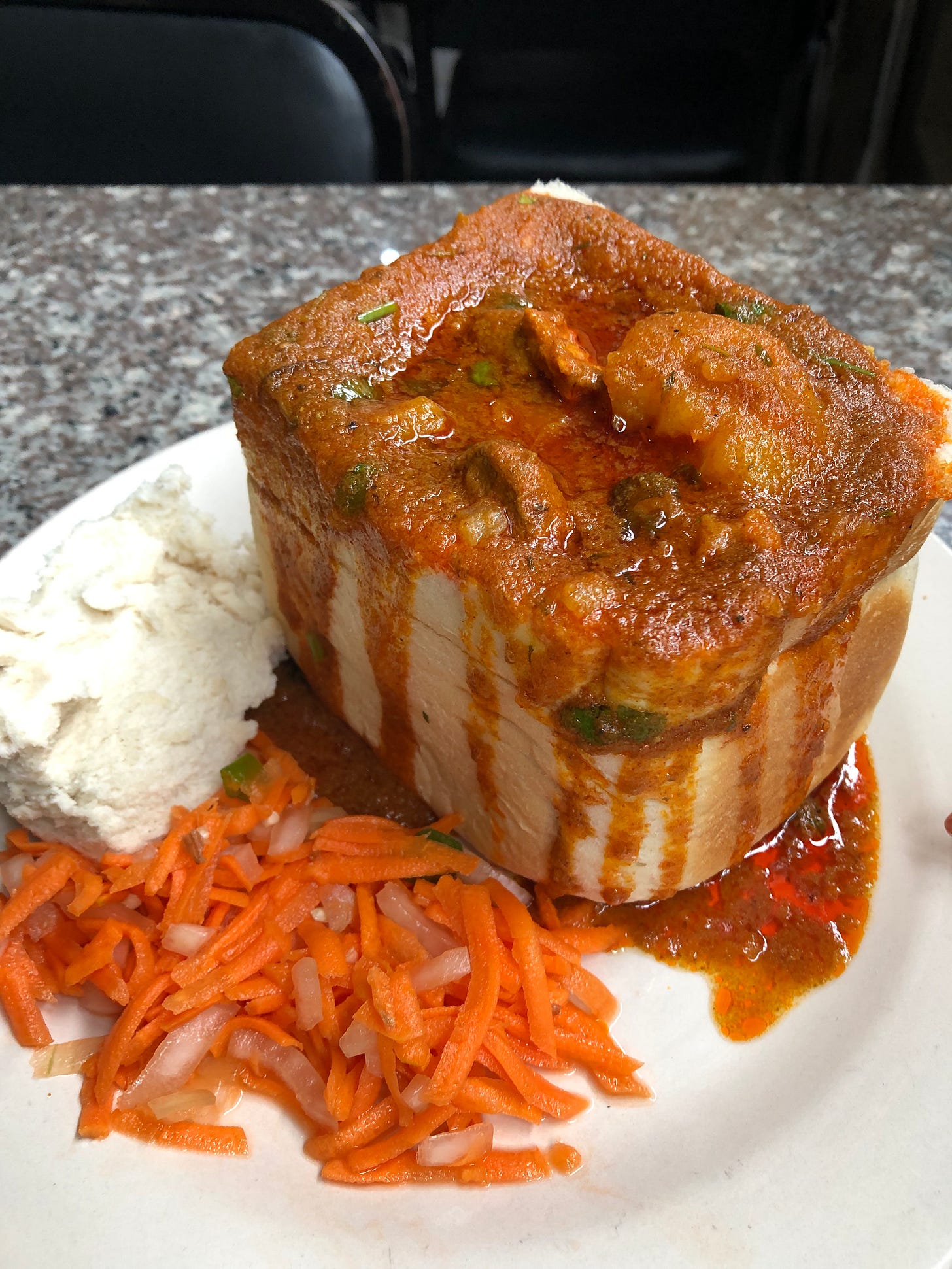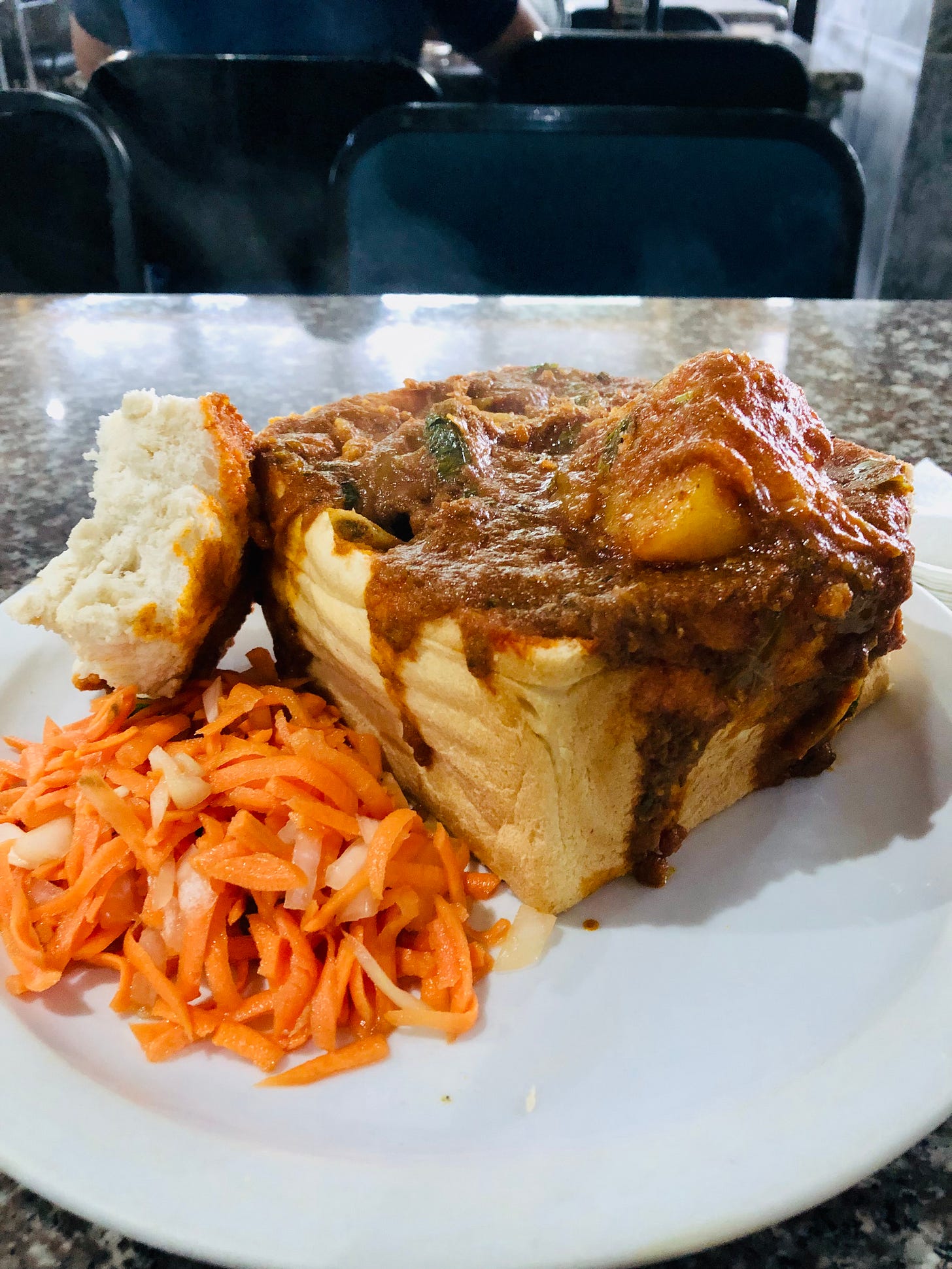I went to where the Bunny Chow originated: Durban, South Africa.
When I got to Durban, I quickly realised that it wasn’t a place where many tourists visit.
My driver asked me why I was here and I was like, 'Well, I’m really interested in food and history, so I guess I just had to come to where this specific dish originated.' Bunny chow has its origins in the Indian community of Durban, South Africa. The first group of Indian indentured labourers arrived in Durban in 1860, so they’ve been here for over 160 years.

The particular dish I am talking about is believed to have originated in the 1940s in the Indian neighbourhood of Grey Street (now known as Dr. Yusuf Dadoo Street) in Durban. It was created due to the economic challenges faced by the Indian labourers who couldn't afford both the curry and the bread. And we know you can’t just eat curry; it's got to be eaten with some type of bread or rice.
The story goes that a restaurant owner named R.K. Vaid created the first bunny chow by hollowing out a loaf of bread and filling it with curry. The dish was a convenient and affordable way to serve curry to Indian labourers, who could use the bread as a container for the curry and eat it with their hands. The term 'bunny' originated from the Indian word 'bania,' which referred to the Indian traders and businesspeople. Over time, this little dish gained popularity and became a staple in South Africa and kind of known all over the world.
I got in quite early, so I literally dropped my bags and went straight out for my first bunny chow. I could see all types of brown people sitting and eating, so I found a table and asked for their most popular dish, which is the mutton bunny chow. It came out fast, and I then got into a pickle because I didn't know how to eat it, so I watched a few people; they were tearing bits of the bread off and dipping it in the gravy with their hands. Some were using spoons and forks, so I went for both (just got my nails done lol).
Yooo, that first bite was insane. The curry slappeddd, and with the white bread.
It was spicy, hot, flavoursome; it was one of the best curries I’ve eaten outside of India, and it was pretty much a copy and paste of those flavours too. Because I grew up in a Bengali household, I know those flavours, but eating Indian Indian food was new to me. And I only really understood the diversity in the food when I went to India.
So then coming here, where it is the biggest Indian population outside of India. I can completely understand where these flavours are from. Also the carrot sambal slapped every single time, I’m only eating carrots like that from now on. Some of my favourite places were Canecutters, Hollywood Bets and obviously Gounden's.
I obviously had to dig deeper, so I met up with one of the ‘Mr. India South Africa’ finalists to find out more about the Indian community here in Durban. My trip coincided with Diwali, so he took me to a massive Diwali festival. I was amazed by the turnout of brown people. We bumped into a lot of his friends which gave me a chance to ask them lots of questions, and I found that they ranged from 5th gen to 2nd gen, and I just found that so fascinating.
It was just really cool to mingle and go to a bar, and it is 100% Indians at the bar; I have never ever been anywhere quite like it, and I was explaining to my new friends that back at home in London, we curate nights like this so all types of brown people can be together or if you go to certain areas of London they might have a particular Bollywood night or something like that, and they were fascinated by that. So if you’re into an alternative route to your travels out here, I would highly suggest swinging by Duban and getting a bunny!
Today I want to leave you with this track Angel by Aretha Franklin.
Love,
Rez x






I want! I love the story behind the dish! Soooo coool, loving it Rez 🥪🍛 RIP to your nails ✨❤️
Only tried once in Dubai. I am a big fan. But it is harder for me to classify it, is it closer to Pav Bhaji/ Kheema Pav or closer towards a quiche/tart type situation?